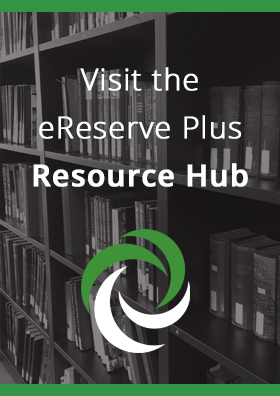There is a lot at stake for educational institutions when it comes to ensuring compliance with copyright law. Instructors often find themselves balancing legal obligations, budgetary concerns and a desire to provide their students with the most relevant, engaging materials.
With these considerations, it is understandable that some educators want to examine their options for using materials in the classroom that are not subject to as many copyright restrictions – searching for more readily available texts. This route, however, is time consuming; even materials that can be easily found are not necessarily free of copyright restrictions.
Let’s take a look at what educators need to know about their obligations, liability and opportunities with copyright in the classroom.
Understanding copyright for educators
Because copyright is governed by national legislation, it can vary significantly from location to location. As such, it is important that anyone working with copyright materials must be aware of the laws that apply to their specific country. Although there are notable differences in national copyright laws, there are some similarities that stand out – particularly when it comes to certain exemptions in educational situations.
Copying materials for use in an educational situation can run afoul of copyright laws in many countries.
The basic principle for copyright is that, unless official permission has been obtained or use meets guidelines for educational exceptions within the legislation, no one but the owner of a work may reproduce or communicate it to the public. In the case of educational uses, this is covered by either fair dealing (Commonwealth countries) or fair use (United States).
Failing to manage and record usage of resources correctly can have serious consequences, and liability can fall on a number of people – from the instructor who copied the materials all the way to the school or governing body behind them.
Such an instance is quite noteworthy in Australia. In the 1975 ruling of the University of NSW v. Moorhouse, the High Court of Australia found that the university itself was liable for a student’s copying of a short story protected by copyright. By not adequately informing students about intellectual property obligations in the library, the school had authorised the infringement in violation of the Copyright Act 1968.
What is considered fair?
When it comes to copying, many educational professionals have heard of the concept of fair use (in the United States) or fair dealing (in Commonwealth countries). This does not mean, however, that using materials in a classroom is a blanket defence against infringement – far from it. Rather, there are legislative guidelines that dictate to what extent reproduction and distribution – such as digital copies made and provided to students for instructional purposes – can occur without violating copyright law and within educational copyright exemptions.
Just like the underlying legislation, educational use requirements vary based on country; it’s important for educators to know what these guidelines are in their location.
For these exceptions in the United States, Australia, New Zealand, and the UK, educational use generally applies in an educational context when certain considerations are met. These include ensuring that the amount of a work copied is not substantial, it is done for instructional purposes only and that the commercial interests of the work’s owner are not harmed. eReserve Plus has localised copyright support built in from the ground up.
 A number of considerations must be met when applying fair use exemptions to the classroom.
A number of considerations must be met when applying fair use exemptions to the classroom.Each country has more nuanced guidelines on each of these factors; checking that educational use is in line with them is of the utmost importance. eReserve Plus has built in localisations for the specific educational copyright exemptions and law for the United States (with built in fair use assessment system), Australia, New Zealand, Singapore and Canada.
Copyright management solutions
Copyright management systems help educators know what materials they can safely use.
Because there is an element of risk when it comes to educational exemptions, the safest option is for educators to ensure that they are in compliance with copyright regulations for all their materials. To avoid lengthy and time-consuming checking of copyright permissions, an automated system like eReserve Plus can reduce effort, drastically speed up review and approval, and improve compliance and copyright reporting.
Many institutions maintain agreements with rights agencies or directly with rights owners, which apply to a number of works. Having a system that connects with these processes and agreements helps institutions maintain high standards of copyright compliance and reporting.
Under such a licencing scheme, educators have legal access to a wide range of materials that they can use for instruction. Thanks to copyright management systems, it is much easier to create reading lists and lesson plans based on available works while reducing cost, effort and risk.
To learn more about copyright solutions for educators, get in touch with eReserve today.


